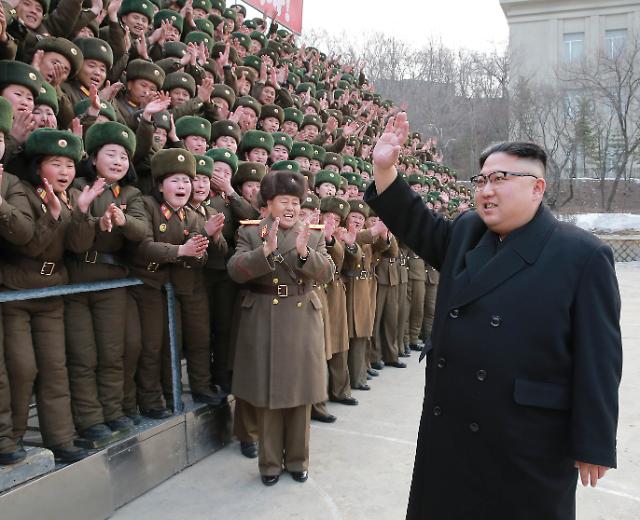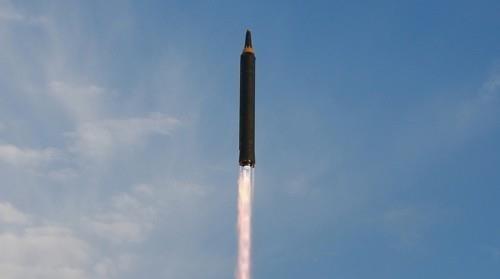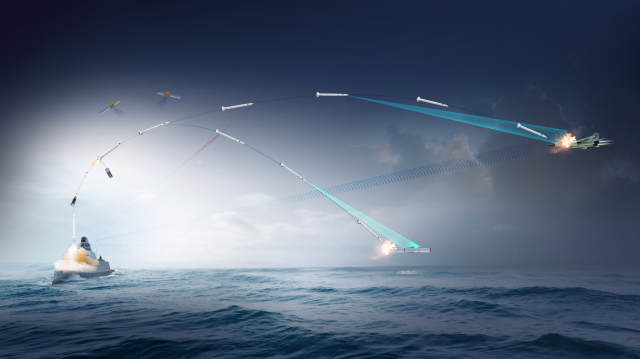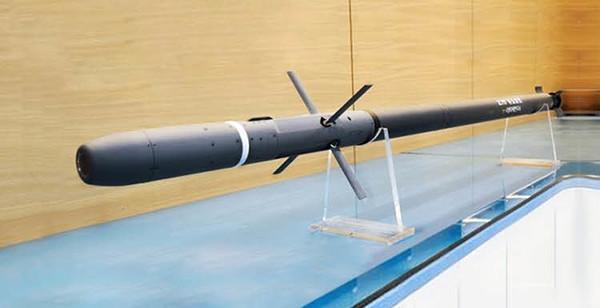
[Yonhap Photo]
North Korea test-fired four ballistic missiles into the sea in an apparent show of force amid high cross-border military tensions elevated by a major military exercise by US and South Korean troops, military authorities said.
The missiles were launched from 7:36 am (2236 GMT) at a place near North Korea's main missile base in Dongchang-ri towards the East Sea, the South's Joint Chiefs of Staff (JCS) said, adding they landed into the sea between Japan and the Korean peninsula after flying about 1,000 kilometers (620 miles).
Japan said three of the four missiles fell into the exclusive economic zone (EEZ), some 250 kilometers west of Akita Prefecture. JCS officials said Seoul and Washington were conducting a joint study to determine the type of North Korean missiles.
At its Sohae Space Center, North Korea has tested rocket engines and launched various missiles, including a long-range rocket on February 7 last year. Washington and its allies have condemned the rocket test as a cover for developing an intercontinental ballistic missile (ICBM) capable of delivering a nuclear bomb up to the US mainland.
It's not clear whether Monday's launch was related to the development of ICBM technology, a JCS spokesman told reporters.
South Korea condemned the latest launch as a grave threat to peace and stability on the Korean Peninsula. "It is a blatant and clear violation of UNSC resolutions," Unification Ministry spokesman Jeong Joon-hee told reporters. "We strongly condemn it as a grave threat to peace and stability of the Korean peninsula and the international community."
North Korea warned of "merciless" retaliation last week after US and South Korean troops flexed their muscle with Foal Eagle, an annual field training exercise involving powerful strategic weapons such as the USS Carl Vinson aircraft carrier.
There are about 28,000 US troops stationed in South Korea. Extra US military assets and personnel come from abroad for the spring drills that Washington and Seoul insist are purely defensive in nature, but which Pyongyang condemns as provocative rehearsals for an attack on the North.
Joint drills by South Korea and the United States have become more offensive-oriented, shifting the focus toward infiltration and preemptive strikes away from defense. The change reflects growing The change reflects growing concerns about the North's ballistic missile and nuclear programs.
On February 12, Pyongyang launched a new intermediate-range ballistic missile called "Pukguksong-2", demonstrating its improved capability to develop an ICBM and other strategic weapons. At that time, Pyongyang said it is now able to carry out a strategic mission accurately and swiftly in any place.
Pukguksong-2 with an improved solid fuel engine capable of carrying a nuclear warhead more accurately was based on technology used for a submarine-launched ballistic missile (SLBM) launched in August last year. Seoul said the new missile was estimated to have a range of 2,500-3,000 kilometers, though further analysis is necessary to determine whether it can be fitted with a nuclear warhead.
The North's SLBM program has been a prime security concern in Seoul and Washington, though US experts believe Pyongyang is still years away from the operational deployment of a submarine carrying ballistic missile for wartime missions.
Lim Chang-won = cwlim34@ajunews.com




